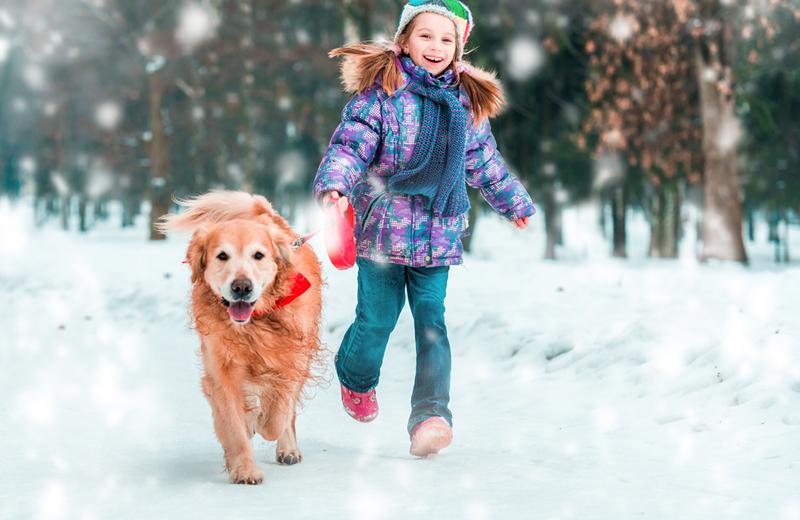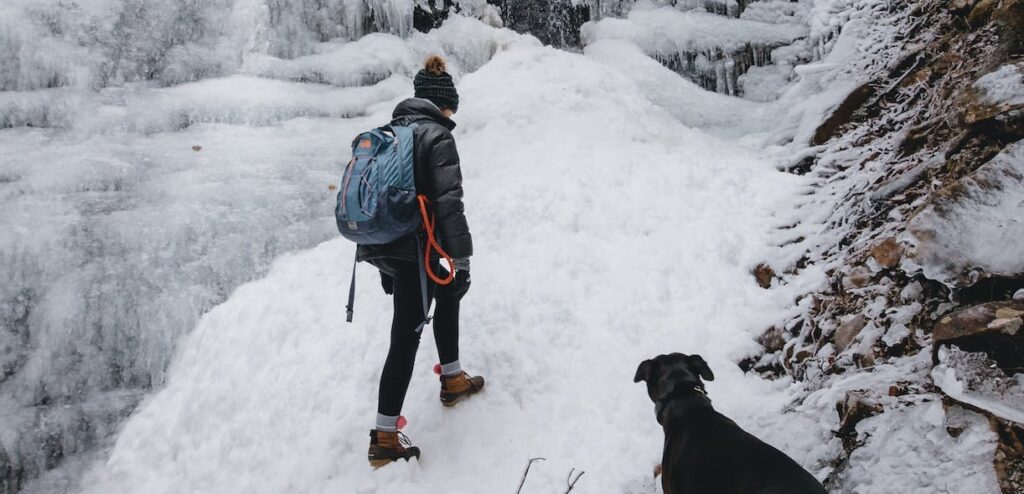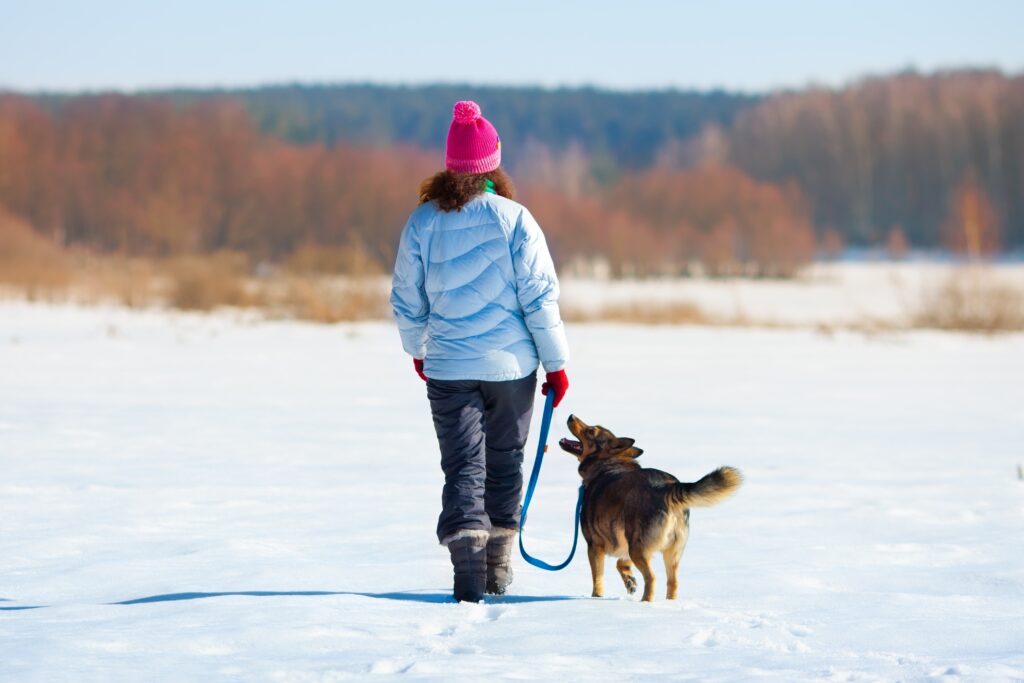The nights are colder, the days are shorter, and your dog’s favorite chew toy is buried under ten inches of snow. What a perfect day to play with your dog. While not all dogs care for snow in the same way, they all still need regular exercise to stay fit and healthy for life. Here are a few winter activities you can try to help boost your dog’s energy and fitness level over the next few winter months.
Treasure Hunt
Try burying a stick, toy, or even a treat in the snow. While cross-country skiing seems passive and relaxing enough, skis are fun to chase for canines (they’re just giant fetching sticks) and your pet may end up injuring himself. For dogs that require a bit of help finding their reward, try hiding the object closer to your dog at first, then slowly burying it further away the better your dog gets at the game.
Fetch, Catch & Beyond
If your dog loves to fetch or catch rubber balls chances are he will love trying to do the same with snowballs. Fair warning: dogs really love this game so be prepared to make a large stockpile of snowballs, and be careful not to pack the snow too much.
The Big Roll
If you live near a hilly park try rolling snowballs down the bank. Your dog won’t be able to get enough chasing and pouncing.
Hide & Seek
This game is ideal for two or more people. Have one person hold your dog while you go and hide, then have the dog come find you. This game should only be played in familiar places and less-enclosed settings-and only with well-trained dogs.
Snowshoe
If the snow isn’t outrageously deep, you can always have your dog join you for a snowshoe walk. Remember you may have to leash your pet so be aware of the local park or trail bylaws.
Some popular people activities are simply too dangerous to try to include your dog. Then sit back and watch his natural tracking instinct kick in.
Of course, many of the activities you choose to play outdoors can be toned down and simplified into quieter indoor games as well, “Hide & Seek” and “Treasure Hunt” for example. If you share a dwelling, or live in an adjoining apartment, do be conscious of your neighbors and the noise level.
Playing Safe
Regardless of the season, safety should always remain top of mind when playtime rolls around. Here are a couple of safety tips to remember before and after venturing outside during the cold months.
Pace
Don’t overwork your dog and start with small simple activities at first. Cold temperatures are worse for canines that suffer from arthritis and joint conditions. Also, be mindful of your dog’s age before deciding how much time you plan on spending outside.
Warmth
If you’re planning on being outside for an extended period of time, dress your dog accordingly. Avoid going out in deep-freeze weather altogether. And remember to keep your pet dry-while fur is an excellent insulator, many dogs do succumb to hypothermia in the winter.
Paws
Watch for icicles and snow building up on your dog’s paws. They make walking and running uncomfortable for your pet. Sidewalk salt can also cause your dog’s footpads to crack. Consider a pair of booties or rubbing your dog’s feet with a family petroleum jelly product before each walk. Be sure to wash and wipe off the petroleum and salt once you come back inside.
Water
Often people just associate dehydration with heat and sweating. Your dog can become just as dehydrated playing in the snow. So be sure to carry a bottle of fresh drinking water for the dog. It’s cleaner and healthier than letting him eat snow.



